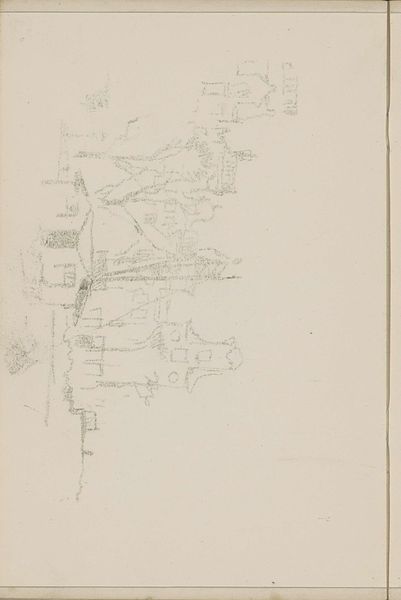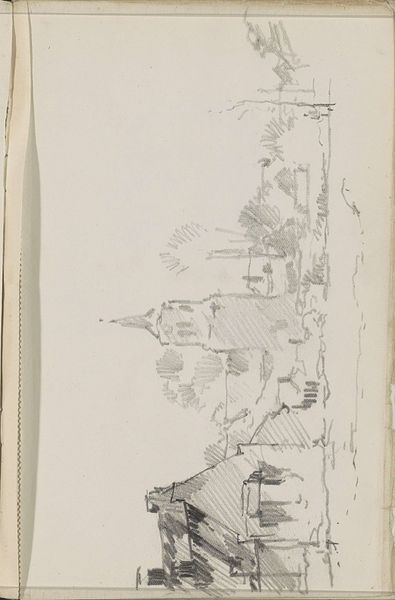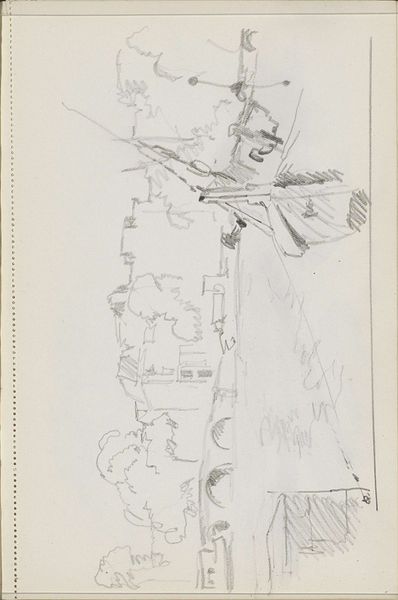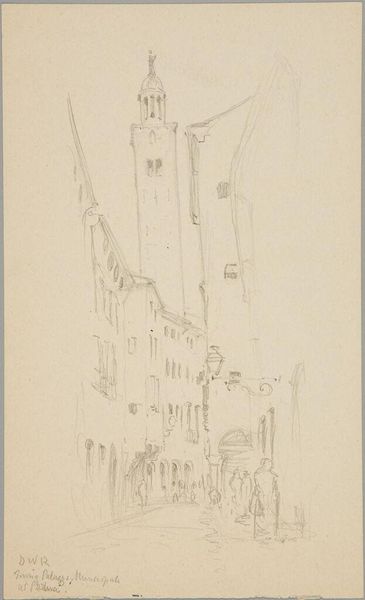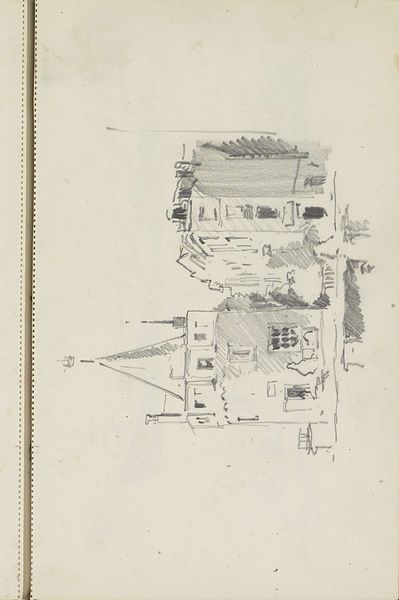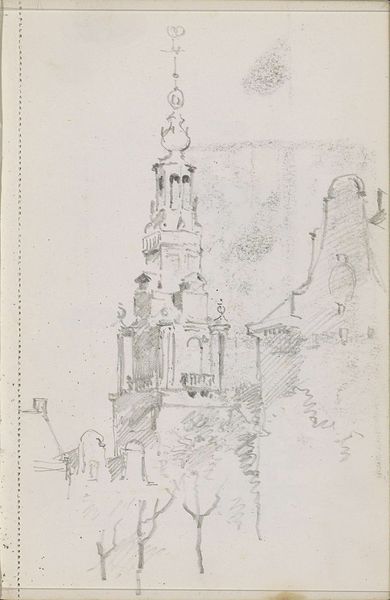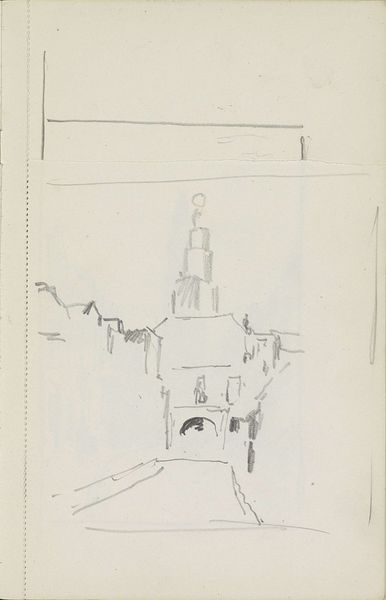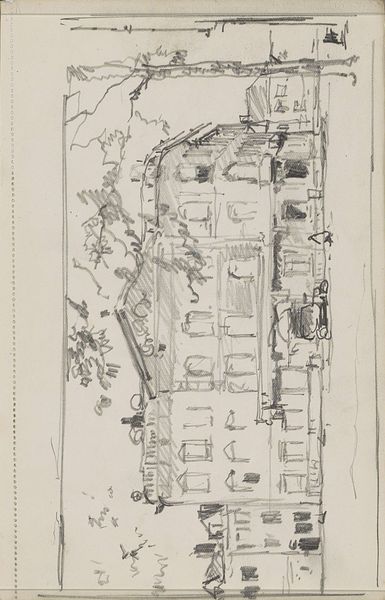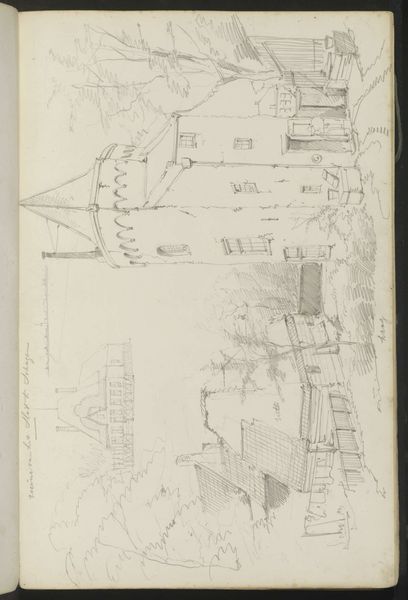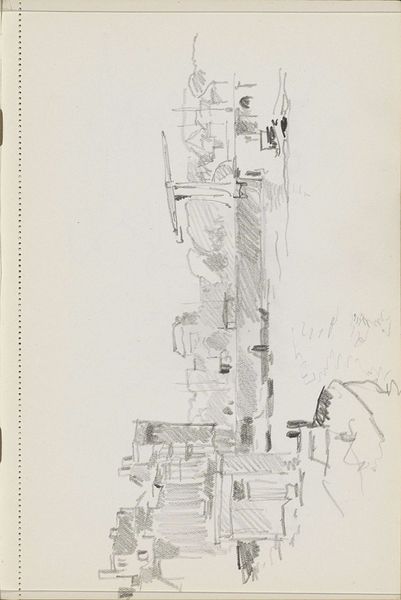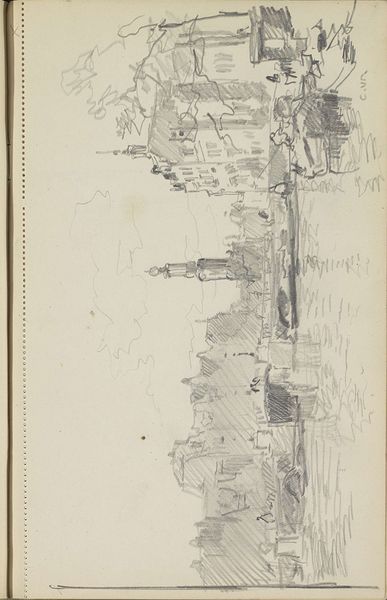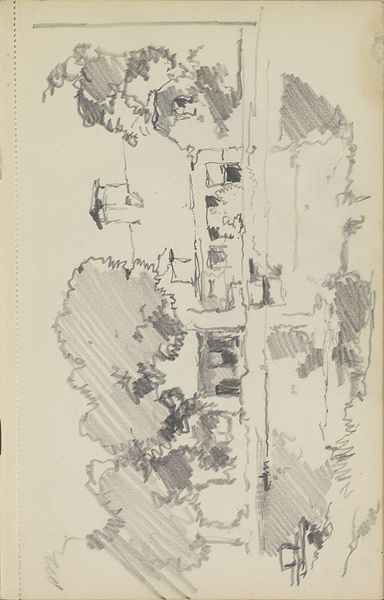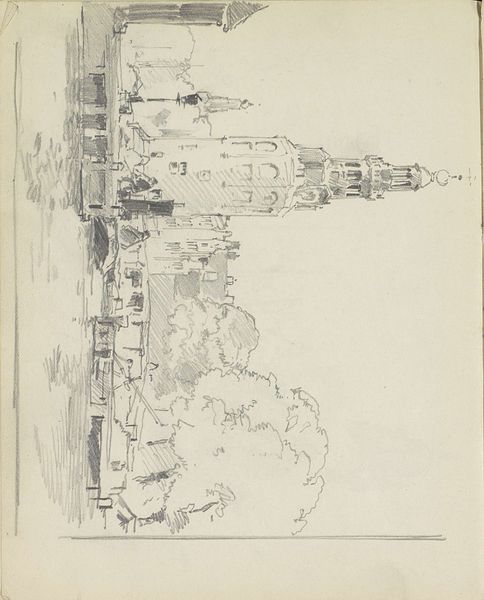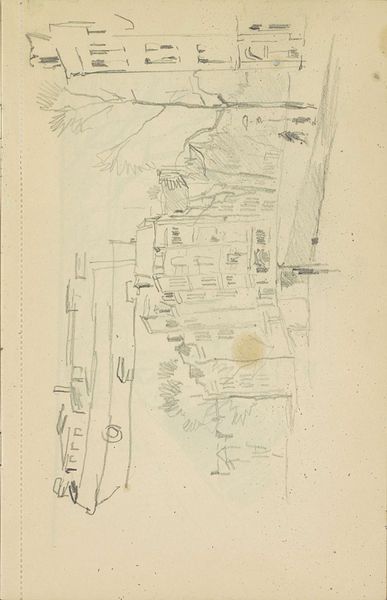
drawing, pencil
#
drawing
#
form
#
pencil
#
line
#
cityscape
#
street
#
realism
#
building
Copyright: Rijks Museum: Open Domain
Curator: What a compelling image! We’re looking at Cornelis Vreedenburgh’s "Street with a Gate and Tower," created around 1936. It’s a pencil drawing currently held here at the Rijksmuseum. Editor: It feels like a fleeting memory captured in graphite. The lines are so delicate, almost hesitant. A sense of transience definitely permeates the work. Curator: Exactly. Vreedenburgh was fascinated by cityscapes, and this piece highlights his interest in architectural forms, using line work to define depth and structure. One could argue this speaks to the growing interest in urban environments as sites of labor, migration and social inequality in that era. Editor: Do you think he chose pencil specifically to suggest fragility, impermanence, even erasure? Because cities, particularly their poorer sections, were frequently subject to redevelopment in the 1930s. Curator: That's a sharp insight! Considering the socio-economic upheaval of the interwar period, we might view this drawing as more than just an aesthetic exercise. It may represent an unspoken commentary on urban change, gentrification, and potentially, the displacement of certain populations within that shifting urban landscape. The tower itself seems to stand defiant amidst these transformations. Editor: The lack of figures emphasizes the emptiness and possibly the alienation that modernization brought, wouldn't you agree? Where are the bodies and stories within these structural constraints? Curator: Absolutely, the absence is a presence. In the broader context of art history, Vreedenburgh's work can be situated within discussions around modernism and its engagement with urban space and societal change. We might read it alongside Walter Benjamin's exploration of flânerie, or the Situationist critiques of urban planning and power dynamics. Editor: Fascinating to think about the connections with contemporary theory too, the interplay of art history, identity, politics and how those intersections impact on something seemingly straightforward. Curator: Well, this work demonstrates how a seemingly simple sketch can become a powerful reflection on the politics of space. Editor: Indeed, it underscores how much an artwork can carry beyond its immediate visual appearance, sparking a layered discussion relevant to history, politics and contemporary lived experience.
Comments
No comments
Be the first to comment and join the conversation on the ultimate creative platform.
